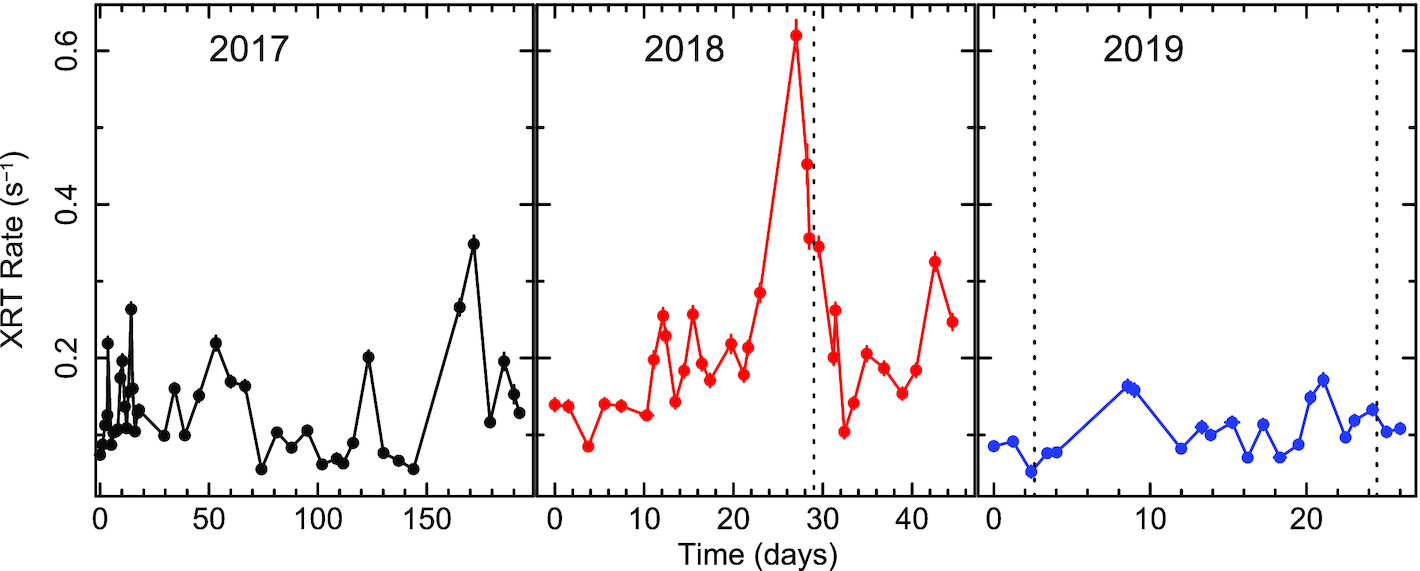The flaring X-ray corona in the quasar PDS 456
Abstract
New Swift monitoring observations of the variable, radio-quiet quasar, PDS 456, are presented. A bright X-ray flare was captured in 2018 September, the flux increasing by a factor of 4 and with a doubling time-scale of 2 d. From the light crossing argument, the coronal size is inferred to be ≲30 gravitational radii for a black hole mass of 109 M⊙ and the total flare energy exceeds 1051 erg. A hardening of the X-ray emission accompanied the flare, with the photon index decreasing from Γ = 2.2 to Γ = 1.7 and back again. The flare is produced in the X-ray corona, the lack of any optical or UV variability being consistent with a constant accretion rate. Simultaneous XMM-Newton and NuSTAR observations were performed, 1-3 d after the flare peak and during the decline phase. These caught PDS 456 in a bright, bare state, where no disc wind absorption features are apparent. The hard X-ray spectrum shows a high energy roll-over, with an e-folding energy of $E_{\rm fold}=51^{+11}_{-8}$ keV. The deduced coronal temperature, of kT = 13 keV, is one of the coolest measured in any AGN and PDS 456 lies well below the predicted pair annihilation line in X-ray corona. The spectral variability, becoming softer when fainter following the flare, is consistent with models of cooling X-ray coronae. Alternatively, an increase in a non-thermal component could contribute towards the hard X-ray flare spectrum.
- Publication:
-
Monthly Notices of the Royal Astronomical Society
- Pub Date:
- January 2021
- DOI:
- 10.1093/mnras/staa3377
- arXiv:
- arXiv:2010.14295
- Bibcode:
- 2021MNRAS.500.1974R
- Keywords:
-
- black hole physics;
- galaxies: active;
- quasars: individual (PDS 456);
- X-rays: galaxies;
- Astrophysics - High Energy Astrophysical Phenomena;
- Astrophysics - Astrophysics of Galaxies
- E-Print:
- 18 pages, 16 figures, accepted for publication in MNRAS
